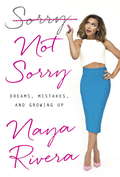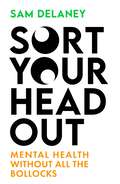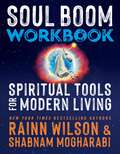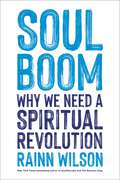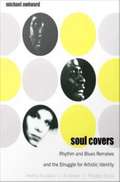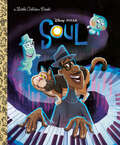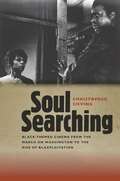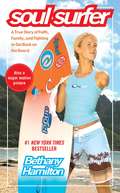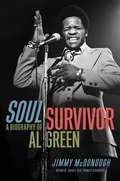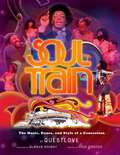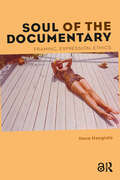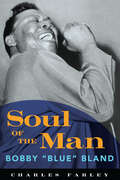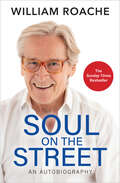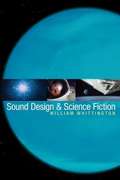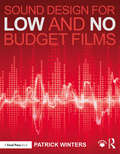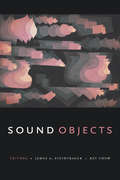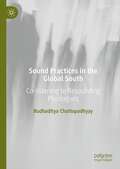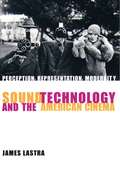- Table View
- List View
Sorry Not Sorry: Dreams, Mistakes, and Growing Up
by Naya RiveraFunny and deeply personal, Sorry Not Sorry recounts Glee star Naya Rivera's successes and missteps, urging young women to pursue their dreams and to refuse to let past mistakes define them.Navigating through youth and young adulthood isn't easy, and in Sorry Not Sorry, Naya Rivera shows us that we're not alone in the highs, lows, and in-betweens. Whether it's with love and dating, career and ambition, friends, or gossip, Naya inspires us to follow our own destiny and step over--or plod through--all the crap along the way. After her rise and fall from early childhood stardom, barely eking her way through high school, a brief stint as a Hooters waitress, going through thick and thin with her mom/manager, and resurrecting her acting career as Santana Lopez on Glee, Naya emerged from these experiences with some key life lessons:Sorry:- All those times I scrawled "I HATE MY MOM" in my journal. So many moms and teenage daughters don't get along--we just have to realize it's nothing personal on either side.- At-home highlights and DIY hair extensions. Some things are best left to the experts, and hair dye is one of them.- Falling in love with the idea of a person, instead of the actual person.Not Sorry:- That I don't always get along with everyone. Having people not like you is a risk you have to take to be real, and I'll take that over being fake any day.- Laughing at the gossip instead of getting upset by it.- Getting my financial disasters out of the way early--before I was married or had a family--so that the only credit score that I wrecked was my own.Even with a successful career and a family that she loves more than anything else, Naya says, "There's still a thirteen-year-old girl inside of me making detailed lists of how I can improve, who's never sure of my own self-worth." Sorry Not Sorry is for that thirteen-year-old in all of us.From the Hardcover edition.
Sort Your Head Out: Mental health without all the bollocks
by Sam Delaney'An honest, funny account of how we're all capable of changing for the better' SETH MEYERS'A great, motivating book that can really help - every bloke should read it' SHAUN RYDERSam Delaney was Jack the Lad. He was confident, loud and funny; an absolute legend, to be honest. Or at least that was what he pretended to be.But when he reached his thirties, work, relationships and fatherhood started to take their toll. Like so many blokes who seemed to be totally fine, he often felt like a complete failure whose life was out of control; anxiety and depression had secretly plagued him for years. Turning to drink and drugs only made things worse. Sam knew he needed help - the problem was that he thought self-help was for hippies, sobriety was for weirdos and therapy was for neurotics.Keeping it all inside was what nearly dragged Sam under. Then he began to open up and share his story with others. Soon his life started to get better and better. Now, he's written this book to help you do the same.Covering his complex upbringing, fast paced career, struggles with addiction and recovery, and detailing lessons he's learnt along the way, Sort Your Head Out is Sam's startlingly raw, compassionate and hilarious account of why opening up is the first step to sorting your head out.
Sort Your Head Out: Mental health without all the bollocks
by Sam Delaney'An honest, funny account of how we're all capable of changing for the better' SETH MEYERS'A great, motivating book that can really help - every bloke should read it' SHAUN RYDERSam Delaney was Jack the Lad. He was confident, loud and funny; an absolute legend, to be honest. Or at least that was what he pretended to be.But when he reached his thirties, work, relationships and fatherhood started to take their toll. Like so many blokes who seemed to be totally fine, he often felt like a complete failure whose life was out of control; anxiety and depression had secretly plagued him for years. Turning to drink and drugs only made things worse. Sam knew he needed help - the problem was that he thought self-help was for hippies, sobriety was for weirdos and therapy was for neurotics.Keeping it all inside was what nearly dragged Sam under. Then he began to open up and share his story with others. Soon his life started to get better and better. Now, he's written this book to help you do the same.Covering his complex upbringing, fast paced career, struggles with addiction and recovery, and detailing lessons he's learnt along the way, Sort Your Head Out is Sam's startlingly raw, compassionate and hilarious account of why opening up is the first step to sorting your head out.
Sort Your Head Out: Mental health without all the bollocks
by Sam Delaney'An honest, funny account of how we're all capable of changing for the better' SETH MEYERS'A great, motivating book that can really help - every bloke should read it' SHAUN RYDERSam Delaney was Jack the Lad. He was confident, loud and funny; an absolute legend, to be honest. Or at least that was what he pretended to be.But when he reached his thirties, work, relationships and fatherhood started to take their toll. Like so many blokes who seemed to be totally fine, he often felt like a complete failure whose life was out of control; anxiety and depression had secretly plagued him for years. Turning to drink and drugs only made things worse. Sam knew he needed help - the problem was that he thought self-help was for hippies, sobriety was for weirdos and therapy was for neurotics.Keeping it all inside was what nearly dragged Sam under. Then he began to open up and share his story with others. Soon his life started to get better and better. Now, he's written this book to help you do the same.Covering his complex upbringing, fast paced career, struggles with addiction and recovery, and detailing lessons he's learnt along the way, Sort Your Head Out is Sam's startlingly raw, compassionate and hilarious account of why opening up is the first step to sorting your head out.
Soul Boom Workbook: Spiritual Tools for Modern Living
by Rainn Wilson Shabnam MogharabiThe indispensable, interactive workbook from actor and writer Rainn Wilson, inspired by and based on his New York Times bestselling book—now a hit podcast—Soul Boom: Why We Need a Spiritual Revolution. Rainn Wilson posits that a &“Soul Boom&” is the potential for a spiritual revolution to instigate transformations, both individually and collectively. It's the healing balm that our world needs in our contemporary mental health crisis. With the Soul Boom podcast, Wilson has extended the conversation beyond Soul Boom: Why We Need a Spiritual Revolution, engaging with brilliant artists, writers, and thinkers every week. Now with the journal-style Soul Boom Workbook: Spiritual Tools for Modern Living—written in collaboration with Wilson&’s SoulPancake co-founder and writer Shabnam Mogharabi—readers have an indispensable companion book filled with hands-on prompts, inspired reflections, and ingenious creative activities. Wilson&’s approach to spirituality is relatable and applies to people of all beliefs, even the skeptics. The journal enables readers to find more purpose, meaning, and spirituality in their hectic lives as they seek out practical and transformative answers to life&’s biggest questions.
Soul Boom: Why We Need a Spiritual Revolution
by Rainn WilsonIn this New York Times and Los Angeles Times bestseller, comedic actor, producer, and writer Rainn Wilson explores the problem-solving benefits that spirituality gives us to create solutions for an increasingly challenging world. The trauma that our struggling species has experienced in recent years—because of both the pandemic and societal tensions that threaten to overwhelm us—is not going away anytime soon. Existing political and economic systems are not enough to bring the change that the world needs. In this book, Rainn Wilson explores the possibility and hope for a spiritual revolution, a &“Soul Boom,&” to find a healing transformation on both a personal and global level For Wilson, this is a serious and essential pursuit, but he brings great humor and his own unique perspective to the conversation. He feels that, culturally, we&’ve discounted spirituality—faith and the sacred—and we need profound healing and a unifying understanding of the world that the great spiritual traditions provide. Wilson&’s approach to spirituality—the non-physical, eternal aspects of ourselves—is relatable and applies to people of all beliefs, even the skeptics. Filled with genuine insight—not to mention enlightening Kung Fu and Star Trek references—Soul Boom delves into ancient wisdom to seek out practical, transformative answers to life&’s biggest questions.
Soul Covers: Rhythm and Blues Remakes and the Struggle for Artistic Identity
by Michael AwkwardSoul Covers is an engaging look at how three very different rhythm and blues performers--Aretha Franklin, Al Green, and Phoebe Snow--used cover songs to negotiate questions of artistic, racial, and personal authenticity. Through close readings of song lyrics and the performers' statements about their lives and work, the literary critic Michael Awkward traces how Franklin, Green, and Snow crafted their own musical identities partly by taking up songs associated with artists such as Dinah Washington, Hank Williams, Willie Nelson, George Gershwin, Billie Holiday, and the Supremes. Awkward sees Franklin's early album Unforgettable: A Tribute to Dinah Washington, released shortly after Washington's death in 1964, as an attempt by a struggling young singer to replace her idol as the acknowledged queen of the black female vocal tradition. He contends that Green's album Call Me (1973) reveals the performer's attempt to achieve formal coherence by uniting seemingly irreconcilable aspects of his personal history, including his career in popular music and his religious yearnings, as well as his sense of himself as both a cosmopolitan black artist and a forlorn country boy. Turning to Snow's album Second Childhood (1976), Awkward suggests that through covers of blues and soul songs, Snow, a white Jewish woman from New York, explored what it means for non-black enthusiasts to perform works considered by many to be black cultural productions. The only book-length examination of the role of remakes in American popular music, Soul Covers is itself a refreshing new take on the lives and work of three established soul artists.
Soul Little Golden Book (Little Golden Book)
by Golden BooksThis Little Golden Book is based on Disney/Pixar's Soul--streaming on Disney+ December 25, 2020!Ever wonder where your passion, your dreams, and your interests come from? What is it that makes you . . . YOU? In 2020, Pixar Animation Studios takes you on a journey from the streets of New York City to the cosmic realms to discover the answers to life's most important questions. Disney/Pixar Soul is directed by two-time Academy Award® winner Pete Docter (Up, Inside Out) and produced by Academy Award® nominee Dana Murray (Lou short). This Little Golden Book retelling is perfect for girls and boys ages 2 to 5, as well as Disney Little Golden Book collectors of all ages!
Soul Searching: Black-themed Cinema from the March on Washington to the Rise of Blaxploitation
by Christopher SievingThe sixties were a tremendously important time of transition for both civil rights activism and the U.S. film industry. Soul Searching examines a subject that, despite its significance to African American film history, has gone largely unexplored until now. By revisiting films produced between the march on Washington in 1963 and the dawn of the "blaxploitation" movie cycle in 1970, Christopher Sieving reveals how race relations influenced black-themed cinema before it was recognized as commercially viable by the major studios. The films that are central to this book--Gone Are the Days (1963), The Cool World (1964), The Confessions of Nat Turner (never produced), Uptight (1968), and The Landlord (1970)--are all ripe for reevaluation and newfound appreciation. Soul Searching is essential reading for anyone interested in the politics and cultural movements of the 1960s, cinematic trends like blaxploitation and the American "indie film" explosion, or black experience and its many facets.
Soul Surfer: A True Story of Faith, Family, and Fighting to Get Back on the Board
by Bethany Hamilton Sheryl Berk Rick BundschuhThe amazing story of the thirteen-year-old surfer girl who lost her arm in a shark attack but never lost her faith -- and of her triumphant return to competitive surfing. <P><P> They say Bethany Hamilton has saltwater in her veins. How else could one explain the tremendous passion that drives her to surf? How else could one explain that nothing -- not even the loss of her arm in a horrific shark attack -- could come between her and the waves? <P> That Halloween morning in Kauai, Hawaii -- a glorious part of the world, where it's hard to deny the divine -- Bethany responded to the shark's stealth attack with the calm of a girl with God on her side. Pushing pain and panic aside, she immediately began to paddle with one arm, focusing on a single thought: "Get to the beach...." Rushed to the hospital, where her father, Tom Hamilton, was about to undergo knee surgery, Bethany found herself taking his spot in the O.R. It's the kind of coincidence that isn't mere coincidence to the Hamilton family, a clan whose motto could easily be "the family that surfs and prays together stays together." To them it was a sign someone had a greater plan than the one they'd been working on themselves -- which had been to scrape together whatever resources they could to help Bethany rise to the top of her sport. When the first thing Bethany wanted to know after surgery was "When can I surf again?" it became clear that her unfaltering spirit and determination were part of a greater story -- a tale of courage and faith that this modest and soft-spoken girl would come to share with the world. <P> Soul Surfer is a moving account of Bethany's life as a young surfer, her recovery in the wake of the shark attack, the adjustments she's made to her unique surfing style, her unprecedented bid for a top showing in the World Surfing Championships, and, most fundamentally, her belief in God. It is a story of girl power and spiritual grit that shows that the body is no more essential to surfing -- perhaps even less so -- than the soul.
Soul Survivor: A Biography of Al Green
by Jimmy McdonoughThe bestselling author of Shakey: Neil Young's Biography presents the first in-depth biography of the legendary soul singer Al Green.Al Green has blessed listeners with some of the biggest hits of the past fifty years. "Love and Happiness," "I'm Still in Love with You," "Let's Get Married," and "I'm Tired of Being Alone" are but a sampling of the iconic songs that led a generation to embrace love in perhaps the most tumultuous period in this country's history, an unparalleled body of work that has many calling Green one of the greatest soul singers of all time. The music legend has sold over 20 million albums and been sampled by numerous rappers, and even President Obama has been known to sing a chorus or two. The now-Bishop Green is without a doubt one of the most beloved yet inscrutable figures ever to grace the popular music stage, and he has managed to magically sidestep being successfully scrutinized in print. Until now.Acclaimed journalist and author Jimmy McDonough expertly tackles this most elusive of subjects and aims to present readers with the definitive portrait of a man everyone knows but few understand. McDonough manages to break through Green's joyous veneer to reveal the contrary, tortured, and solitary individual beneath, a man who spent decades dancing an uneasy tightrope between the sacred and the profane. From his childhood in the backwaters of Arkansas to commanding the stage in front of throngs of lusting fans to addressing a very different audience from the pulpit of his own church, readers will bear witness to the creation of some of the most electrifying soul music ever recorded; learn the hitherto untold real story behind Green's colorful down-home Memphis label, Hi Records; and--by way of countless in-depth interviews with major players in the story, some speaking for the very first time--unravel one of the last great mysteries in popular music: Al Green.
Soul Train: The Music, Dance, and Style of a Generation
by Insight Editions Ahmir "Questlove" ThompsonCelebrate the culture of cool with this compact, paperback edition of the heartfelt tribute to Soul Train, a worldwide phenomenon of dance, music, and fashion. From Ahmir "Questlove" Thompson of the award-winning hip-hop group the Roots, comes this vibrant book commemorating the legacy of Soul Train—the cultural phenomenon that launched the careers of artists such as Tina Turner, Stevie Wonder, the Jackson 5, Whitney Houston, Lenny Kravitz, LL Cool J, and Aretha Franklin. Questlove reveals the remarkable story of the captivating program, and his text is paired with more than 350 photographs of the show's most memorable episodes and the larger-than-life characters who defined it: the great host Don Cornelius, the extraordinary musicians, and the people who lived the phenomenon from the dance floor. The foreword by Gladys Knight and preface from Nick Cannon add heartfelt and unique perspectives on this seminal show. 35-YEAR HISTORY: A vibrant celebration of one of the longest-running nationally syndicated programs in American television history, which ran over 1,100 episodes. BEHIND THE SCENES: Includes first-hand commentaries about the show&’s impact on celebrity&’s careers and our culture from beloved artists such as Gladys Knight, Steve Wonder, Carmen Electra, B.B. King, Al Green, Nick Cannon, and Bill Withers. FILLED WITH PHOTOS: Contains hundreds of images of iconic moments from the show, including many never-before-seen.
Soul of the Documentary: Framing, Expression, Ethics
by Ilona HongistoSoul of the Documentary offers a groundbreaking new approach to documentary cinema. Ilona Hongisto stirs current thinking by suggesting that the work of documentary films is not reducible to representing what already exists. By close-reading a diverse body of films - from The Last Bolshevik to Grey Gardens - Hongisto shows how documentary cinema intervenes in the real by framing it and creatively contributes to its perpetual unfolding. The emphasis on framing brings new urgency to the documentary tradition and its objectives, and provokes significant novel possibilities for thinking about the documentary's ethical and political potentials in the contemporary world.
Soul of the Man: Bobby "Blue" Bland (American Made Music Series)
by Charles FarleyBobby “Blue” Bland’s silky-smooth vocal style and captivating live performances helped propel the blues out of Delta juke joints and into urban clubs and upscale theaters. Until now, his story has never been told in a book-length biography. Soul of the Man: Bobby “Blue” Bland relates how Bland, along with longtime friend B. B. King, and other members of the loosely knit group who called themselves the Beale Streeters, forged a new electrified blues style in Memphis in the early 1950s. Combining elements of Delta blues, southern gospel, big-band jazz, and country and western music, Bland and the Beale Streeters were at the heart of a revolution. This biography traces Bland’s life and recording career, from his earliest work through his first big hit in 1957, “Farther Up the Road.” It goes on to tell the story of how Bland scored hit after hit, placing more than sixty songs on the R&B charts throughout the 1960s, ’70s, and ’80s. While more than two-thirds of his hits crossed over onto pop charts, Bland is surprisingly not widely known outside the African American community. Nevertheless, many of his recordings are standards, and he has created scores of hit albums such as his classic 1961 Two Steps from the Blues, widely considered one of the best blues albums of all time. Soul of the Man contains a select discography of the most significant recordings made by Bland, as well as a list of all his major awards. A four-time Grammy nominee, he received Lifetime Achievement Awards from the National Academy of Recording Arts and Sciences and the Blues Foundation, as well as the Rhythm & Blues Foundation’s Pioneer Award. He was also inducted into the Rock & Roll Hall of Fame and the Blues Foundation’s Hall of Fame. This biography at last heralds one of America’s great music makers.
Soul on the Street: An Autobiography
by William RoacheWilliam Roache has been an actor on Britain's best-loved soap opera, Coronation Street, for over 48 years – making him the world's longest- serving soap star. As a young actor William auditioned for a TV drama that was likely to be running for only a few weeks. Now, almost 50 years later, he is the only original cast member and the soap's success has established him as a household name. Over the course of that time, William's character Ken Barlow has been married four times, twice to Deirdre, and had a series of tumultuous affairs. This gripping autobiography will appeal to fans of 'The Street' and is an exciting insight into the spiritual influences that have shaped this much-loved actor. It will make inspiring reading for anyone interested in personal development.
Soulside: Washington, Dc, 1986-1989
by Alexis FleisigA photographic history of the DC-based 1980s punk rock band that recorded for Dischord Records. "If you know and love the band, this is a must, if you like DC punk bands, also." --Trust (Germany) Soulside, a band from the mid-1980s Dischord Records punk rock scene in Washington, DC, grew into maturity in a few short years, goin
Sound
by Jeff Smith Mark Kerins James Wierzbicki Vanessa Theme Ament Kathryn Kalinak Nathan Platte Jay BeckSound has always been an integral component of the moviegoing experience. Even during the so-called "silent era," motion pictures were regularly accompanied by live music, lectures, and sound effects. Today, whether we listen to movies in booming Dolby theaters or on tiny laptop speakers, sonic elements hold our attention and guide our emotional responses. Yet few of us are fully aware of the tremendous collaborative work, involving both artistry and technical wizardry, required to create that cinematic soundscape. Sound, the latest book in the Behind the Silver Screen series, introduces key concepts, seminal moments, and pivotal figures in the development of cinematic sound. Each of the book's six chapters cover a different era in the history of Hollywood, from silent films to the digital age, and each is written by an expert in that period. Together, the book's contributors are able to explore a remarkable range of past and present film industry practices, from the hiring of elocution coaches to the marketing of soundtrack records. Not only does the collection highlight the achievements of renowned sound designers and film composers like Ben Burtt and John Williams, it also honors the unsung workers whose inventions, artistry, and performances have shaped the soundscapes of many notable movies. After you read Sound, you'll never see--or hear--movies in quite the same way. Sound is a volume in the Behind the Silver Screen series--other titles in the series include Acting; Animation; Art Direction and Production Design; Cinematography; Costume, Makeup, and Hair; Directing; Editing and Special Visual Effects; Producing; and Screenwriting.
Sound Art: Concepts and Practices
by Thom HolmesSound Art offers the first comprehensive introduction to sound art written for undergraduate students. Bridging and blending aspects of the visual and sonic arts, modern sound art first emerged in the early 20th century and has grown into a thriving and varied field. In 13 thematic chapters, this book enables students to clearly grasp both the concepts behind this unique area of art, and its history and practice. Each chapter begins with an exploration of key ideas and theories, followed by an in-depth discussion of selected relevant works, both classic and current. Drawing on a broad, diverse range of examples, and firmly interdisciplinary, this book will be essential reading for anyone studying or teaching the theory, history, appreciation, or practice of sound art.
Sound Design and Sound Fiction
by William WhittingtonSound is half the picture, and since the 1960s, film sound not only has rivaled the innovative imagery of contemporary Hollywood cinema, but in some ways has surpassed it in status and privilege because of the emergence of sound design. This in-depth study by William Whittington considers the evolution of sound design not only through cultural and technological developments during the last four decades, but also through the attitudes and expectations of filmgoers. Fans of recent blockbuster films, in particular science fiction films, have come to expect a more advanced and refined degree of film sound use, which has changed the way they experience and understand spectacle and storytelling in contemporary cinema. The book covers recent science fiction cinema in rich and compelling detail, providing a new sounding of familiar films, while offering insights into the constructed nature of cinematic sound design. This is accomplished by examining the formal elements and historical context of sound production in movies to better appreciate how a film sound track is conceived and presented. Whittington focuses on seminal science fiction films that have made specific advances in film sound, including 2001: A Space Odyssey, THX 1138, Star Wars, Alien, Blade Runner (original version and director's cut), Terminator 2: Judgment Day and The Matrix trilogy and games--milestones of the entertainment industry's technological and aesthetic advancements with sound. Setting itself apart from other works, the book illustrates through accessible detail and compelling examples how swiftly such advancements in film sound aesthetics and technology have influenced recent science fiction cinema, and examines how these changes correlate to the history, theory, and practice of contemporary Hollywood filmmaking.
Sound Design for Low & No Budget Films
by Patrick WintersDon’t let your indie film be sabotaged by bad sound! One of the weakest technical aspects of a low or no budget short or feature film is usually the sound, and in Sound Design for Low and No Budget Films, author Patrick Winters explains what filmmakers need to do to fix that. Learn how to improve the sound quality of your low budget film with specific tools and practices for achieving a better sound track, including detailed, step-by-step explanations of how to edit your production track, create a sound design, record and edit ADR, Foley and sound effects, music, and much more. Focusing on the essential details indie filmmakers need to know, Winters teaches you how to turn a thin and distracting sound track into one that makes your film shine. This practical guide offers: • In-depth focus on hands-on, step-by-step instruction for achieving great sound in post-production, including recording and editing sound effects, ADR and Foley—even without expensive equipment and software. • Techniques specifically designed for low and no budget projects, perfect for both students and aspiring indie filmmakers. • A simple and direct style that any aspiring filmmaker or student can understand without already knowing the industry jargon.
Sound Design for the Visual Storyteller: Creating Sound for Visual Media
by Christopher D. AndersonSound Design for the Visual Storyteller is an overview of the sound design process for the beginner filmmaker or storyteller, providing the foundational knowledge needed to succeed at utilizing and designing sound for visual stories, films, and even podcasts.With a focus on television and film, alongside references to podcast, theatre, event, and game sound design, this all-in-one overview begins with the fundamentals of sound and the structure of a professional sound design team, before exploring the practical topics of post-production, creative workflows, and distribution. Supported by a plethora of audio and video examples to demonstrate key concepts, this book guides aspiring sound designers on the power and production value of the well-conceived soundtrack and showcases some of the most effective techniques for getting there.This is an ideal introduction for storytellers working in a range of contexts, including filmmakers, sound designers, and sound editors, as well as students of sound for film and broadcast.
Sound Objects
by Rey Chow James A. SteintragerIs a sound an object, an experience, an event, or a relation? What exactly does the emerging discipline of sound studies study? Sound Objects pursues these questions while exploring how history, culture, and mediation entwine with sound’s elusive objectivity. Examining the genealogy and evolution of the concept of the sound object, the commodification of sound, acousmatic listening, nonhuman sounds, and sound and memory, the contributors not only probe conceptual issues that lie in the forefront of contemporary sonic discussions but also underscore auditory experience as fundamental to sound as a critical enterprise. In so doing, they offer exciting considerations of sound within and beyond its role in meaning, communication, and information and an illuminatingly original theoretical overview of the field of sound studies itself. Contributors. Georgina Born, Michael Bull, Michel Chion, Rey Chow, John Dack, Veit Erlmann, Brian Kane, Jairo Moreno, John Mowitt, Pooja Rangan, Gavin Steingo, James A. Steintrager, Jonathan Sterne, David Toop
Sound Practices in the Global South: Co-listening to Resounding Plurilogues
by Budhaditya ChattopadhyayThis book develops a comprehensive understanding of the unique sound worlds of key regions in the Global South, through an auto-ethnographic method of self-reflective conversations with prominent sound practitioners from South Asia, Africa, the Middle East and Latin America. The conversations navigate various trajectories of sound practices, illuminating intricate sonic processes of listening, thinking through sounds, ideating, exposing, and performing with sound. This collection of conversations constitutes the main body of the book, including critical and scholarly commentaries on aural cultures, sound theory and production. The book builds a ground-up approach to nurturing knowledge about aural cultures and sonic aesthetics, moving beyond the Eurocentric focus of contemporary sound studies. Instead of understanding sound practices through consumption and entertainment, they are explored as complex cultural and aesthetic systems, working directly with the practitioners themselves, who largely contribute to the development of the sonic methodologies. Refocusing on the working methods of practitioners, the book reveals a tension between the West’s predominant colonial-consumerist cultures, and the collective desires of practitioners to resist colonial models of listening by expressing themselves in terms of their arts and craft, and their critical faculties.Conversations with: Clarence Barlow, Sandeep Bhagwati, Rajesh K. Mehta, Sharif Sehnaoui, Ximena Alarcón Díaz, Hardi Kurda, Mario de Vega, Luka Mukhavele, Khyam Allami, Cedrik Fermont, Khaled Kaddal, David Velez, Juan Duarte, Youmna Saba, Abdellah M. Hassak, Mariana Marcassa, Amanda Gutiérrez, Syma Tariq, Alma Laprida, Siamak Anvari, Mohamad Safa, Debashis Sinha, Zouheir Atbane, Constanza Bizraelli, Jatin Vidyarthi, Joseph Kamaru, Surabhi Saraf, Isuru Kumarasinghe, Hemant Sreekumar.
Sound Reporting, Second Edition: The NPR Guide to Broadcast, Podcast and Digital Journalism
by Jerome SocolovskyAn indispensable guide to audio journalism grounded in NPR’s journalistic values and practices, with tips and insights from its top reporters, hosts, editors, producers, and more. A lot has changed in media in recent years, but one thing that remains steadfast is National Public Radio’s (NPR) position as a trusted source of news in the United States. Now producing dozens of shows and podcasts, plus livestreams and coverage on other media platforms, NPR is the leading authority on reporting, writing, and delivering audio news and storytelling to today's diverse audiences. In this completely revised guide, audio journalism trainer Jerome Socolovsky offers a look into just how NPR does it, following the same journey a story would from idea to the moment it reaches its listeners. Based on more than eighty interviews with producers, reporters, editors, hosts, and other NPR staffers, Sound Reporting reveals how stories get pitched; how they are reported, produced, written, edited, voiced, and tailored to multiple media formats; and how shows and podcasts are put together. It begins with a presentation of NPR's values and includes a new chapter on journalist safety, a topic of timely importance. Podcasts, now part of the mainstream of the media universe, are treated alongside traditional programs throughout. In these pages, the voices of NPR staff offer a glimpse into their profession. Discover how correspondent Ruth Sherlock overcame seemingly insurmountable odds as she raced to the scene of a devastating earthquake in Turkey, the four main ways Ramtin Arablouei incorporates music into podcasts, and how “Weekend Edition” host Ayesha Rascoe touches listeners so deeply she received a pair of homemade potholders in the mail from one of them. Reading this book is like sitting in a room full of top-notch producers, seasoned correspondents, trusted hosts, and rigorous editors—all telling you inspiring stories about their craft to help you learn from their experience. At a time when the legitimacy and authority of journalism are under critique, transparency into how the news is made is more important than ever. This book offers a fascinating look behind the scenes at a premier public media organization and will be a trusted resource for anyone in or exploring a future in audio journalism.
Sound Technology and the American Cinema: Perception, Representation, Modernity (Film and Culture Series)
by James LastraRepresentational technologies including photography, phonography, and the cinema have helped define modernity itself. Since the nineteenth century, these technologies have challenged our trust of sensory perception, given the ephemeral unprecedented parity with the eternal, and created profound temporal and spatial displacements. But current approaches to representational and cultural history often neglect to examine these technologies. James Lastra seeks to remedy this neglect.Lastra argues that we are nowhere better able to track the relations between capital, science, and cultural practice than in photography, phonography, and the cinema. In particular, he maps the development of sound recording from its emergence to its confrontation with and integration into the Hollywood film.Reaching back into the late eighteenth century, to natural philosophy, stenography, automata, and human physiology, Lastra follows the shifting relationships between our senses, technology, and representation.
